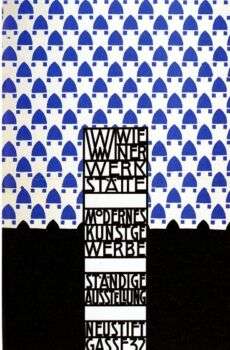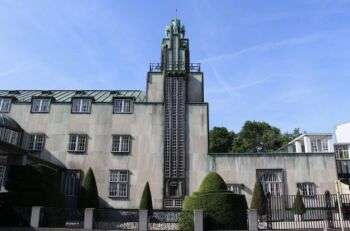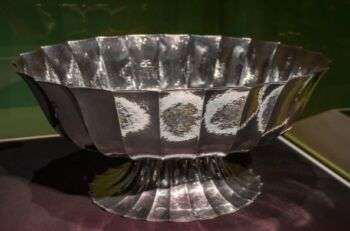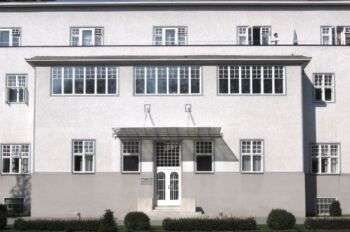Established in 1903, the Wiener Werkstätte (Vienna Workshop) became a successful enterprise and a community of visual artists from Austria, bringing together architects, artists, and designers.

Image source: https://search.creativecommons.org/photos/50c7d991-ab96-405b-816d-f690afbde170 by MCAD Library
Who founded the Style?
Around the year 1900, the city of Vienna was one of Europe’s leading cultural centers. In this context, the architect Josef Hoffmann, the graphic designer and painter Koloman Moser and the modern-minded patron Fritz Waerndorfer founded the now-famous Vereinigung für Kunsthandwerk (Arts and Crafts Association) Wiener Werkstätte.

Image source:https://en.wikipedia.org/wiki/Wiener_Werkst%C3%A4tte#/media/File:Wiener_Werkst%C3%A4tte_Laden.jpg
About Wiener Werkstätte
This “productive cooperative of artisans” had to produce high-quality handicraft objects to satisfy every type of daily need (furniture, architecture, porcelain, glass, and clothing), in close contact between artists and consumers. The Wiener Werkstätte left a lasting mark on the history of design with its pioneering designs and the interdisciplinary goal of holistically penetrating all areas of life.

Image source: https://search.creativecommons.org/photos/16918d3c-c697-48ff-a56f-48e2e729f392 by corno.fulgur75
Mission
The Wiener Werkstätte aimed to renew applied arts and to embellish life using everyday objects designed by artists. Following British examples, the challenge was to offer simple and elegant one-of-a-kind items in response to the unprofitable and industrial replicas of past styles. For example, a teapot and a cupboard were designed with the same diligence and idealism.

Image source: https://search.creativecommons.org/photos/389600e0-0e5d-4fdf-be5e-2011dcf419c4 by Narisa
Everyday objects are elevated to masterpieces. All spheres of life should be homogeneously designed and do justice to modern culture. For a time, the Wiener Werkstätte products enjoyed enormous commercial success, which led to the creation of outlets in Karlsbad, Marienbad, Zurich, New York, and Berlin. Many of the best-known artists and architects of this period created works for the Werkstätte, including such names as Gustav Klimt, Oskar Kokoschka, Egon Schiele, Josef Hoffmann, Dagobert Peche, Otto Prutscher, Koloman Moser, Ernst Lichtblau and Josef Frank.

Image source: https://search.creativecommons.org/photos/6403cbe6-a680-40e6-98fb-4e83fd26d3df by Tim Evanson
Architecture
In architectural commissions such as the Purkersdorf Sanatorium and the Palais Stoclet in Brussels, the style realized its ideal of Gesamtkunstwerk (total work of art). This is a coordinated environment in which everything designed is an integral part of the whole project.


Images source: https://en.wikipedia.org/wiki/Sanatorium_Purkersdorf#/media/File:Sanatoriumpurkersdorf1-2.JPG
Info sources:
For more references, please also visit: www.jbdesign.it/idesignpro
